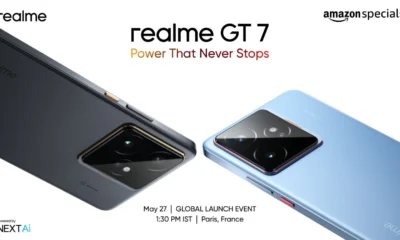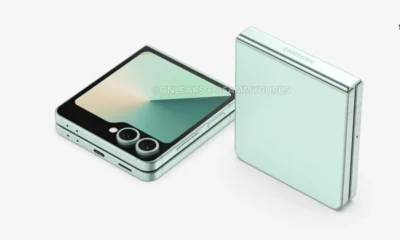Tech News
iPhones are set to get Starlink satellite connectivity!

Apple has made significant strides in improving the communication capabilities of its iPhones, particularly by integrating satellite connectivity. This move comes as a part of an ongoing collaboration with SpaceX and T-Mobile, which is set to offer iPhone users an advanced way to stay connected, even when they’re outside of traditional cellular coverage.
The Latest Update: iOS 18.3 and Satellite Connectivity
The latest update to Apple’s iOS 18.3 introduces support for T-Mobile’s direct-to-cell satellite service, powered by SpaceX’s Starlink network. While the feature is still in its beta phase, a select number of T-Mobile customers have already begun testing this exciting new capability. Previously, T-Mobile’s Starlink service was compatible only with Android devices, specifically some Samsung models such as the Z Fold and S24, as well as certain devices running Android 15. This change marks a significant shift as iPhone users now gain access to this satellite connectivity as part of the trial.
The service allows users to send text messages in remote areas where they would otherwise have no coverage, using Starlink’s satellite network. Beta testers have reported receiving messages that ask them to update their iPhones to iOS 18.3 to enable this functionality, which they can activate through a new toggle found in their cellular data settings. This service, although currently limited to text messaging, is expected to expand in the future to include voice and data capabilities, offering users more options for communication in locations where conventional networks fail.
Apple’s Ongoing Partnership with Satellite Providers
While Apple already offers satellite connectivity through its partnership with Globalstar, which provides users with limited texting capabilities, the addition of Starlink could provide iPhone owners with another satellite communication option. T-Mobile, in particular, has been expanding its satellite communication options, with the beta service now available to iPhone users. The beta tests have shown that users can stay connected by sending text messages via satellite, even in areas where regular cellular signals are unavailable.
Bloomberg reports that this collaboration is somewhat unexpected, as Apple and T-Mobile have not publicly disclosed any previous plans to work together on satellite connectivity. The integration of Starlink into iPhones seems to be a covert move, with Apple working quietly on testing iPhones that support Starlink’s network. As the feature evolves, Apple may offer users an alternative to Globalstar’s satellite network, which is currently limited to emergency communication and contacting first responders.
A More Robust Satellite Connectivity Option
The potential for Starlink’s satellite service to offer more comprehensive coverage than Globalstar is significant. Starlink, which has been used primarily for internet connectivity in remote locations, is now expanding its services to support text messaging and, in the future, voice and data communications. This could make it a more versatile solution for users who need reliable connectivity in rural or disaster-stricken areas where no other networks are available.
T-Mobile has announced that “the vast majority of modern smartphones” will soon be able to use this feature, meaning iPhone users aren’t the only ones set to benefit from this new satellite service. The integration of Starlink is expected to expand beyond the beta phase, giving users more options when it comes to staying connected, even in the most remote locations.
Elon Musk’s Confirmation and Future Plans
SpaceX CEO Elon Musk also made a comment on the potential of the Starlink-Apple collaboration, hinting that the service could evolve significantly in the near future. In a post on X (formerly Twitter), Musk indicated that “medium resolution images, music, and audio podcasts should work with the current generation Starlink direct-to-phone constellation.” He further added that “the next generation constellation will handle medium resolution video,” signaling that more advanced capabilities will become available as the technology matures.
Musk’s remarks suggest that, as Starlink’s technology evolves, users may soon have the ability to transmit not only text messages but also media files and possibly even video, further enhancing the value of satellite connectivity for iPhone users.
What Does This Mean for iPhone Users?
For now, iPhone users who are part of the beta testing program can enjoy the ability to send text messages via satellite when they are in areas without cellular coverage. The feature is expected to become more widely available as Starlink’s capabilities expand, and future updates may include support for voice calls and data usage, making it a more comprehensive satellite communication tool.
As the partnership between Apple, SpaceX, and T-Mobile continues to grow, it’s clear that the integration of Starlink’s satellite connectivity into iPhones is just the beginning of a larger shift toward more reliable and accessible communication technologies. With the promise of broader coverage and enhanced capabilities, this development could revolutionize how users interact with their iPhones in even the most remote corners of the world.












